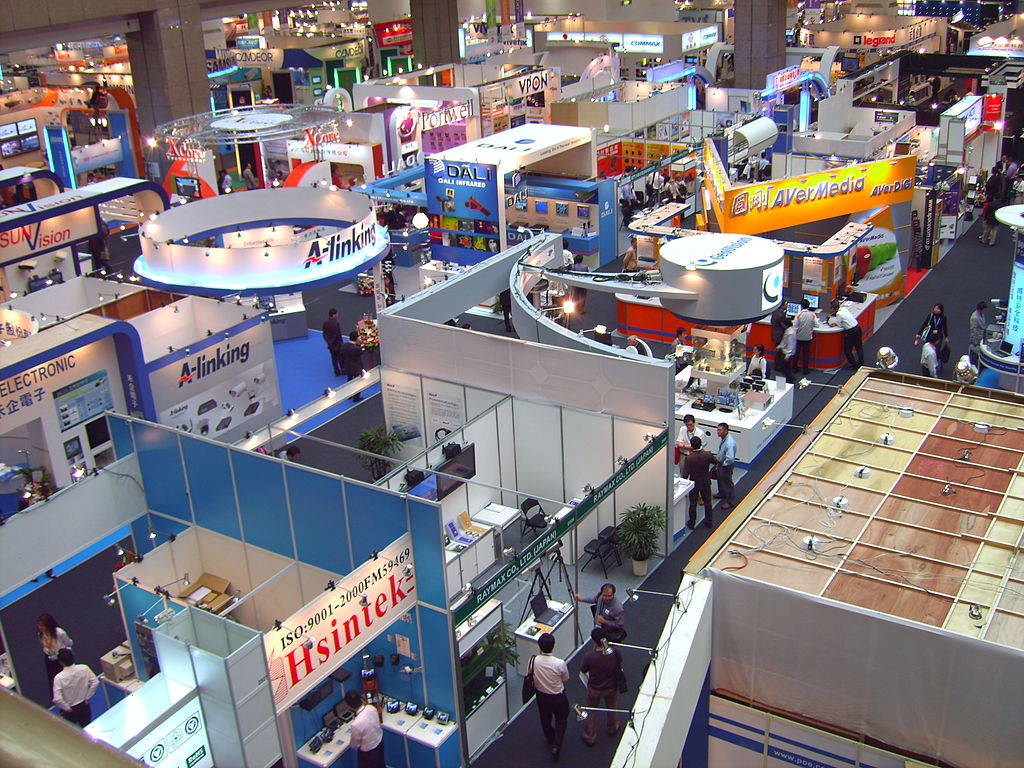 Trade shows or fairs are organized gatherings of buyers and sellers established to create an environment where the buyer and seller can meet and establish communication. The expectation is that the event will lead to a sale or will create a desire for more information that will lead to a sale.
Trade shows or fairs are organized gatherings of buyers and sellers established to create an environment where the buyer and seller can meet and establish communication. The expectation is that the event will lead to a sale or will create a desire for more information that will lead to a sale.
Trade shows can be a great way to market your company. All booths are usually in one location, they generally last one to three days and they attract thousands of exhibitors and prospective customers.
A report prepared by The Trade Show Bureau states that the average total cost of finalizing a sale in the field is $1,080. Compare this figure to the $419 it costs to finalize a sale to a qualified trade show prospect.
Trade shows are one of the most cost-effective ways of promoting your company’s products and services. According to The Center for Exhibition Industry Research (CEIR), the cost of contacting a prospect in the field is $308, which does not include the cost of identifying that prospect prior to the sales call! The cost per visitor contacted at a trade show is $212.
I want to go to a trade show, so what are my options?
There are three common forms of participation in a trade show:
- Companies can attend as visitors to view the competition, assess the market and develop a list of contacts for later follow-up.
- Companies can participate as exhibitors, raising awareness, developing contacts and enhancing prestige.
- Companies can participate in panel discussions or make a presentation. Many trade shows also feature speakers and workshops as part of their activities. By securing a speaking invitation, companies can create a profile without incurring the expenses of exhibition.
Trade shows can be classified in various ways and do not always fit neatly into categories. Some trade shows are narrowly focused on a specific industrial sector or type of product, while others will address virtually any type of business. Some trade shows are exhibitions, at which participants can show what they have to offer. Others are real markets where those attending are expected to make purchases from participants.
Breaking down the pros and cons of each type of trade show
Most trade shows fall under one of the following headings: major general fairs, major specialized trade fairs, secondary trade fairs and consumer fairs.
1. Major general fairs
All kinds of consumer and industrial goods are exhibited at general trade fairs. They are open to the public, but business people also attend. The audience may be international, national, regional or even provincial in scope.
The potential exhibitor must consider that the main problem in exhibiting in major general fairs is the difficulty of attracting a worthwhile number of target business visitors to the stand. Although the audience may be huge, only a small percentage of these visitors may have an interest in any specific product.
2. Major specialized trade fairs
Designed primarily for business visitors, such fairs may also admit the public, usually for only part of the time. They are specialized by industry or trade sector (e.g., food or leather), or sometimes by market (e.g., hospitals or schools). The audience can be both international and national in scope and tends to include people from various levels of trade and industry.
If a company is trying to enter a market, these fairs offer an excellent opportunity to find an agent or importer/ distributor. When a company is established in the market, these fairs can often be used to support representatives by providing them with the opportunity to make contacts with industrial buyers and retailers.
3. Secondary trade fairs
Most trade fairs fall under this category. Although they do not rank with the major fairs, they can be very important in their respective fields. They include highly specialized exhibitions and can be regional, national or even international in scope.
They are usually restricted to business visitors and many of the regional exhibitions are aimed specifically at retailers. They offer an opportunity to strengthen a distribution set-up or increase market penetration. They are often the main channel for introducing a new line of products.
4. Consumer fairs
These events are intended primarily for the public, either from the immediate area or from various parts of the country. Most of these fairs are general with respect to products shown and areas of audience interest. Despite the fact that consumer fairs can attract large audiences, they are usually not a cost-effective way for an exporter to enter a market unless he or she has already established distribution and the company’s products are widely available in retail shops.
An exception would be if the exhibitor could cover all costs and make a profit from sales made at the stand. However, companies do not generally achieve ongoing long-term sales in a market in this manner.
Does attending a trade show fit with my marketing objectives?
Companies should base their decision concerning if and how to participate in a trade show on a number of factors.
It’s important to consider the purpose of the trade show, whether or not your target audience will be in attendance, information about other exhibitors, the layout of the show, and how trade shows may or may not fit with your larger marketing plan. Examine those alongside the company objectives in the market to decide if participation in the trade show is the best way to reach those objectives.
If the company merely wants to meet with someone who will be attending a fair, it may not be necessary to exhibit. If the fair attracts precisely the kinds of people buying the product or service, an exhibit can be extremely worthwhile.







disqus comments